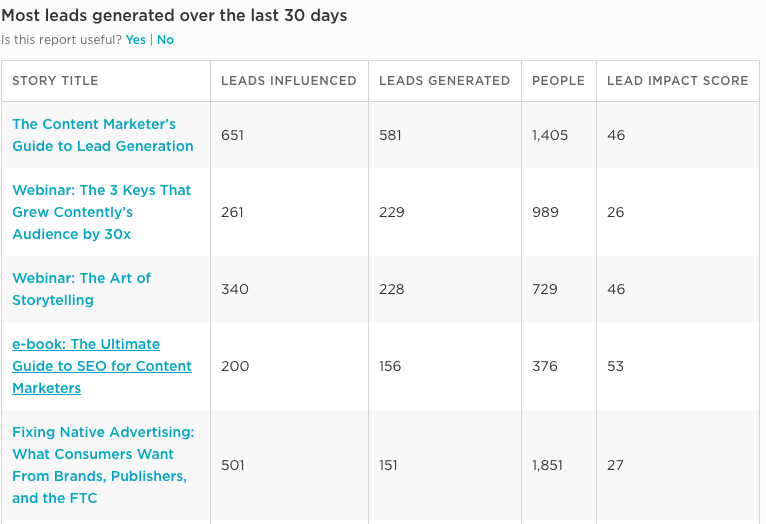Once a brand generates leads, marketing teams are responsible for reporting on what sparked those conversions. Rules of the game There are three main models for lead attribution in content marketing: Final-touch attribution: The last asset that drew the conversion gets credit for the lead. First-touch attribution: The first asset on the lead’s journey gets the credit. The missing players of lead attribution Lead attribution is a numbers game. Those numbers tell a story about which content works best to influence readers. On the Contently platform, one of our most important attribution metrics is “leads influenced.” This metric measures the number of people who were both converted and influenced by a specific page. Influence, in this case, means someone who visited a story and later, on a different page, converted to a lead. To go back to the soccer metaphor, think of it as a tally of the number of goals and assists for a certain story. The formula looks like this: Leads Influenced / People x 100 = Lead Impact Score The lead impact score lets us gauge how many conversions a story drives relative to the total number of readers. Let’s examine recent data from The Content Strategist to see how this looks in action: In the chart, we see that our industry study “Fixing Native Advertising: What Consumers Want From Brands, Publishers, and the FTC” has a lower lead impact score than our e-book “The Content Marketer’s Guide to Lead Generation,” even though the study reached 446 more people.
I grew up playing one of the least glamorous positions on my soccer team: left defender. I wasn’t the forward who scored the goals or the keeper who made the heroic saves. No, I was responsible for stymieing the offense and starting the chain of passes that would put our strikers in position to score.
Even though I couldn’t relish in the satisfaction of netting the winning shot, my coaches assured me I contributed to our wins by assisting other players. It’s been nearly 10 years since I’ve put on a pair of cleats, but the lessons I learned as a defender continue to follow me in my work life.
As a marketing editor, I get to see how top, mid, and bottom-funnel content work together to create “wins” for our department and company at large. Most recently, we’ve paid close attention to lead attribution.
Once a brand generates leads, marketing teams are responsible for reporting on what sparked those conversions. Yet to do so, they need an attribution system that can make sense of how a customer ultimately becomes a lead.
Rules of the game
There are three main models for lead attribution in content marketing:
- Final-touch attribution: The last asset that drew the conversion gets credit for the lead.
- First-touch attribution: The first asset on the lead’s journey gets the credit.
- Multi-touch attribution: All assets get a custom value. (Certain models will give each asset equal weight. Others may assign more value to the first and/or last asset.)
The problem with final-touch attribution is marketers miss the bigger picture, ignoring how different touch points build relationships and win leads. For instance, maybe a lead filled out a lead form after watching a webinar on SEO, but read a story about the unusual relationship between SEO and social media prior to that. Doesn’t the article deserve some recognition for its impact on the conversion?
First-touch attribution, meanwhile, gives all the glory to the person who started the string of passes that led to…

COMMENTS